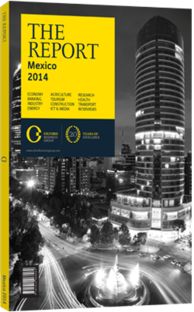Market shift: Financial societies adjust to the new regulatory environment
An important component of the Mexican banking system is its multiple-purpose financial firms (Sociedades Financieras de Objeto Múltiple, SOFOM). Until July 2013, there were two types of financial societies, the other being for limited purpose (Sociedades Financieras de Objeto Limitado, SOFOLs). SOFOLs were created in 1993 and were specialised in granting loans to specific activities or sectors, such as small and medium-sized enterprises, housing and cars. Since July 2013, however, the SOFOLs are no longer legal and they were sold, liquidated or converted into SOFOMs. Most of them were transformed into SOFOMs or merged with other institutions. In July 2013, when they ceased to exist, they held MXN2.7bn ($209m) in assets and their credit portfolio was MXN2.08bn ($162m).
The main function of the SOFOMs is to grant loans as well as provide leasing and financial factoring operations. They can be regulated or non-regulated. Regulated SOFOMs are those in which banks, or their controllers, have a share of the equity and have their credit operations supervised by the National Banking and Securities Commission (Comisión Nacional Bancaria y de Valores, CNBV). For non-regulated SOFOMs, the CNBV supervises them only with regard to preventing money laundering and terrorism financing.
On The Books
In December 2013, SOFOMs held MXN71.1bn ($5.52bn) in assets, or 0.44% of GDP. Credit was the main component of the portfolio (70%) and stood at MXN49.8bn ($3.9bn). Loans to non-financial private companies reached MXN33.7bn ($2.6bn), 68% of the total; followed by personal loans, with 12% at MXN6bn ($466m); loans to governmental entities, 11% of the total at MXN5.6bn ($435m); credit cards, with 6%; and financial entities with 2%.
Non-performing loans reached 3.6% in December 2013. The segments that had the highest ratio were leasing (20.1%), personal (9.7%) and credit cards (4.8%). Non-financial private firms comprised 2.7%, while governmental entities had 2.2% and financial entities 0.05%. The ratio for the SOFOMs was slightly higher than for commercial banks, 3.4%, and in contrast to banks the former saw a decrease from 2012, when it was 4.6%. The capitalisation index was 12.1%, below the verified level for commercial banks of 15.5% and development banks, 14.3%, but above the required minimum of 10.5%.
Operations
SOFOMs cannot accept deposits from the public. Their resources come from loans and debt securities. In 2013, 11.5% of funds, MXN6.7bn ($520.6m), came from debt securities, while 83.1%, MXN48.5bn ($3.8bn), was derived from loans and 5.4%, MXN3.1bn ($241m), from other sources. Short-term loans were the main source of funds, comprising 62% of the total – of which 58% were loans from commercial banks, 41% from development banks and 1% from other sources. Long-term loans were 21% of the total, mostly from commercial banks (74%) and 26% from development banks. Thus, it is a more risky profile, in which short-term funding prevails. Regarding profitability, the return on assests was 2.5% and the return on equity 13.5%, better than in 2012 when the system had negative results.
From 2012 to 2013, the credit portfolio grew 7%. Leasing operations had the best perfomance, with 623% growth, but they represent less than 1% of the total. The 57% growth in personal loans was the most important segment, responsible for 66% of total growth, and even with a modest performance of 2.8% expansion, loans to non-financial private firms were the secondmost important, providing 28% of total growth. In terms of assets held in December 2013, the largest SOFOM was Arrendadora Banorte (AB), with 28.3% of the total at MXN20.2bn ($1.6bn); followed by Sólida, with 19.7% and MXN14bn ($1.1bn); AF BanRegio with 12.4%; SF Inbursa with 11.7%; and Financiera Bajio with 8.9%. Combined, these SOFOMs hold 81% of total sector assets. AB's loan share was 35.6%, followed by SF Inbursa (16.2%), AF Banregio (13.2%) and Finaciera Bajio (12.7%). Solida's share was just 1%, but it had the highest credit growth of SOFOMs in 2013, at 71.4%. SF Inbursa grew 32.7% and AF Banregio 17.9%. AB and Financiera Bajío shrank 0.2% and 1.7%, respectively.
You have reached the limit of premium articles you can view for free.
Choose from the options below to purchase print or digital editions of our Reports. You can also purchase a website subscription giving you unlimited access to all of our Reports online for 12 months.
If you have already purchased this Report or have a website subscription, please login to continue.

